Research Interests

|
Design and Optimization of Novel Wing Planforms The development of small unmanned aerial vehicles (UAVs) and micro-air vehicles (MAVs) in conjunction with the availability of new composite materials created the need for and provided the means to design novel wing planforms. Because of the reduced dimensions and the low-speed velocities involved, with Reynolds numbers ranging from 15K to 500K, most of airfoils and planforms used for commercial aircrafts, with Reynolds numbers ranging from 10M to 100M, are unrealistic when used at much lower Reynolds numbers. The development of novel airfoils and wing planforms for UAVs and MAVs is not limited by the presence of humans on the aircrafts and, consequently, UAVs and MAVs can afford a much wider flying envelop. The design of airfoils and wing planforms is therefore open to the creativity of the designer to meet target applications such as surveillance, communication relay links, ship decoys, and detection of biological, chemical, or nuclear materials. (Figure taken with permission from: T.J. Muller and J.D. DeLaurier, "Aerodynamics of small vehicles", Annual Review of Fluid Mechanics, vol. 35, 2003.) |
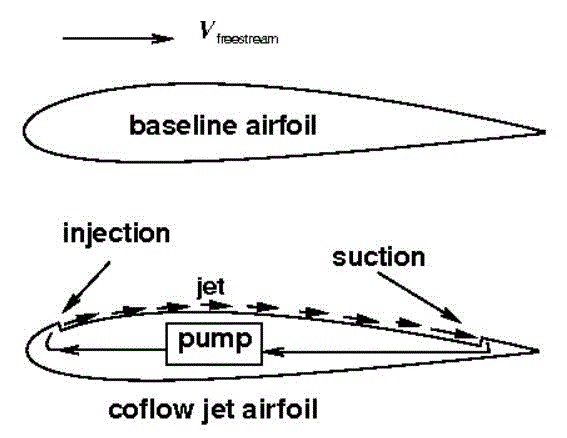
|
Optimazation and Control of Shear Layer Flows Shear layer flows are very common in nature and engineering applications. Shear flow separation often limits the performance of engineering devices reducing for example the pressure recovery of diffusers or the lift acheivable by airfoils, to name a few. Therefore, it is often desirable to control shear flows and their separation because of the potential benefits to engineering applications. Numerous experiments have shown that shear flows are especially sensitive to secondary flows acting near the shear-layer separation point. In the case of diffusers pressure recovery can be enhanced and airfoils stall can be delayed by jets that induce a appropriate favorable pressure gradients (see figure). In the case of bluff bodies, drag can be reduced by appropriately shaped vortex generators able to produce streamwise vortical flows that confine the bodies wake. In the case of a jet in a crossflow, it has been shown that jet penetration and mixing can be improved, combustion efficiency can be increased, and emissions therefore reduced, by intelligently modulating the jet fluid velocity. (Figure taken with permission from: G-C. Zha, W. Gao and C.D. Paxton, "Jet effects on coflow jet airfoil performance", AIAA Journal, vol. 45, n. 6, 2012.) |
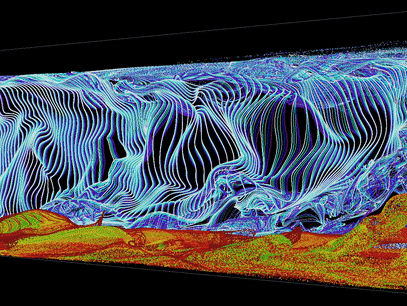
|
Computer Graphic Visualization of Complex Flows Flow visualization is an essential means to undertand the structure and evolution of complex flows. Most fluids (air, water, etc.) are transparent, therefore traditional flow visualizations by means of smoke, dye, hydrogen bubbles, or modern visualizations by means of particle image velocimety (PIV) or planar laser-induced fluorescence (PLIF) are essential tools in experimental studies. Recent advances in computer graphics allow us to mimic such visualizations techniques or develop new ones. In a computer graphic environment, streamlines, pathlines, streaklines and timelines can be used strategically to visualize flow structures impossible to visualize in a real experiment. Furthermore, novel diagnostics can be developed and tested to better visualize unseen featuers of complex flows. (Figure shows a visualization by Prof. L. Cortelezzi for a fully turbulent channel flow at Re_tau=180, data kindly provided by Prof. M. Quadrio.) |
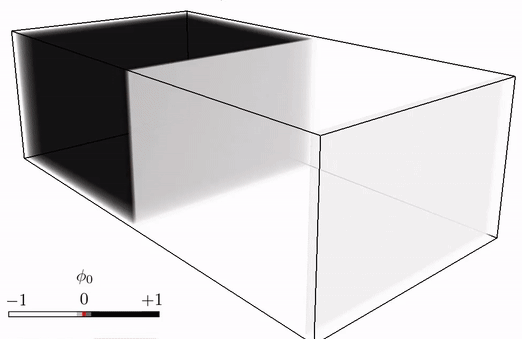
|
Modeling and Simulation of Turbulent Mixing The ability of turbulence to mix one or more scalars within a fluid is of particular relevance to a variety of engineering applications including combustion, pollution dispersion and heat transfer. Using premixed combustion as an example, reactions occur only if the fuel and oxidizer are sufficiently mixed at the molecular level prior to ignition. However, our comprehension and ability to predict turbulent mixing are limited because the fluid mechanics that governs turbulent mixing involves multiscale phenomena for which the details are not yet fully understood. (Figure taken from: Germaine, Mydlarski & Cortelezzi, "Persistence of local anisotropy of passive scalars in wall-bounded flows", Physical Review Fluids 3 (1), 014606, 2018.) |
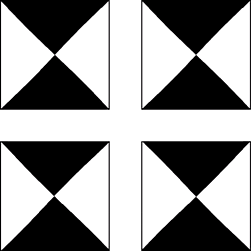
|
Optimization and Control of Laminar Mixing Mixing of two or more different fluids is a crucial step in pharmaceutical, food, polymer and biotechnological processes, to name a few. In many applications it is impractical or impossible to promote turbulence to enhance mixing. Mixing in laminar regimes is generally poor because the fluid motion is dominated by viscous forces. In industrial applications, poor mixing results in severe problems such as insufficient homogenization, low product quality and excessive amount of byproducts. Furthermore, the present competitive market demands a decrease in manufacturing costs of the products obtained through laminar mixing. Therefore, the problem of designing a mixing device able to deliver the required degree of homogenization in the least amount of time using the least amount of energy is of great practical importance. (Figure taken from: Gubanov and Cortelezzi, "Toward the design of an optimal mixer", Journal of Fluid Mechanics, vol. 561, pp. 27-53, 2010.) |
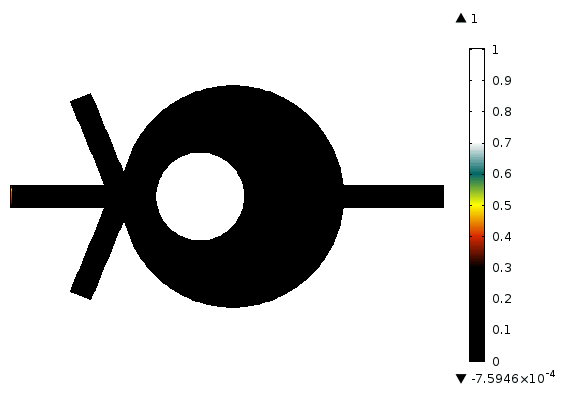
|
Microfluidic Devices for Aerospace/Bioengineering Applications The main target of microfluidics is to assemble all functions of a laboratory for chemical/biological analysis on a platform of a few square centimeters in size, in order to create a so called Lab-on-Chip (LoC). Intrinsic characteristics of microfluidics such as manipulating small volumes (micro/nano liters) of fluids, producing high speed reactions while requiring low energy consumption, easy transportability and low costs (when compared to the costs of the currently available analysis stations) are major benefits for the development and realization of LoC systems. Because of these characteristics, microfluidic systems are especially well suited for performing chemical/biological analysis during aerospace missions. The creation of new microfluidic components and the assembling of large number of microfluidic components over a single, fully automated platform, are still challenging research problems. (Figure taken from: Cortelezzi, Ferrari and Dubini, "A scalable active mocro-mixer for biomedical applications", Microfluids and Nanofluids, 21:31, 2017.) |
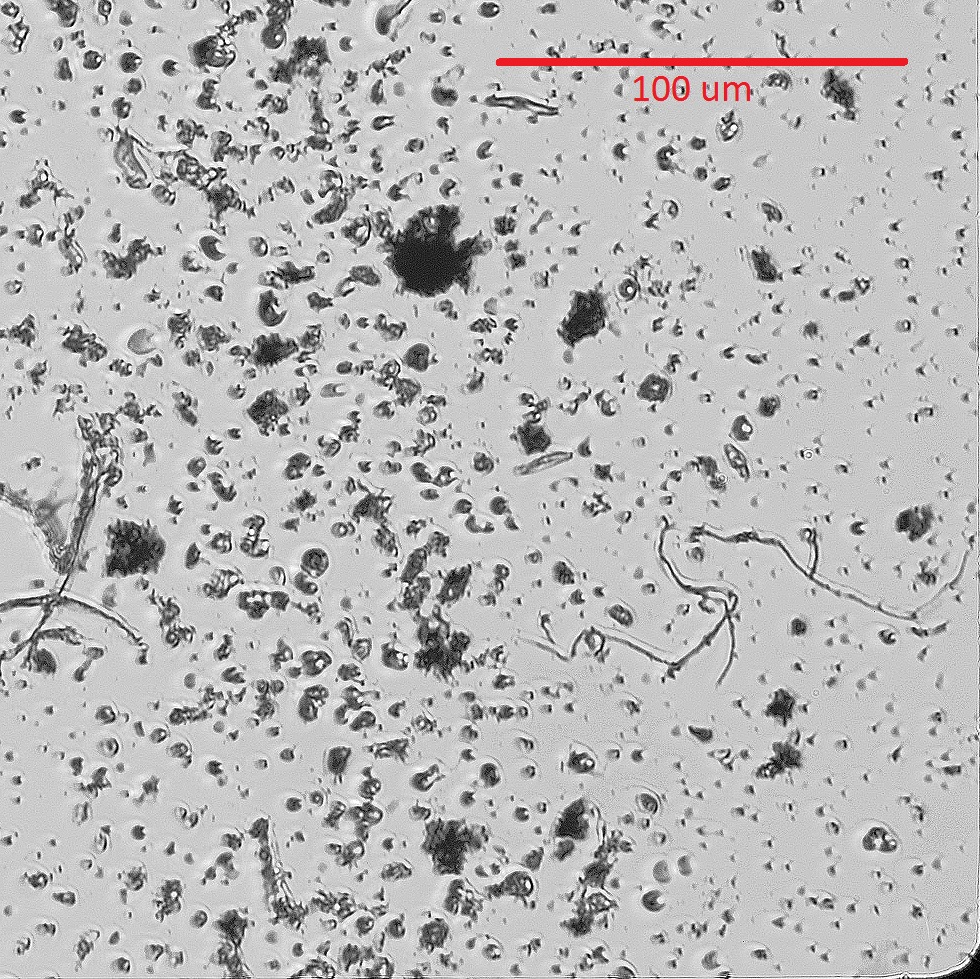
|
Detection of Airborne Particulate: PM10, PM2.5, PM1 Air pollution is an increasingly important issue having a wide impact on environment and society. The conformation of urban settlements together with the expansion of industrialization have lead to the proliferation of anthropogenic sources of atmospheric pollutants, mainly from industrial combustion of fossil fuels, waste incinerators, domestic heating and transportation, promoting the accumulation of pollutants, especially within and around metropolitan and industrial areas. Consequently, most urban populations are exposed to high levels of concentration of gases and microparticles (PM10, PM2.5, PM1), which are harmful and responsible for many diseases, such as neoplasia, respiratory and cardiovascular illnesses, which, ultimately, contribute to the increased rate of mortality. The goal of this study is to design a miniaturized inertial impactor able to collect particles down to PM1. (Figure from premilinary experiments performed by Silvia Pasini, 2018.) |
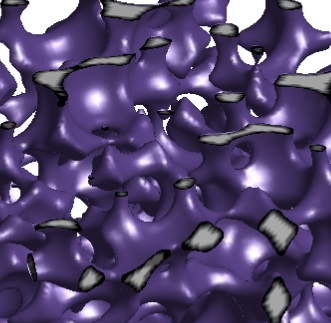
|
Flows Through Realistic Porous Materials This research is motivated by the increasing use of porous surfaces for passive and active flow control in aerodynamic applications. Passive flow control using wall suction, in which fluid is bled from a high-pressure region to a low-pressure region through a porous surface, has been investigated since the 1970s for a broad range of applications such as: the reduction of drag on bluff bodies, the reduction of shock-induced separation on transonic airfoils, laminar flow control, aerodynamic maneuver control of tailless fighter aircraft, the reduction of unsteady lift forces on airfoils, and the reduction of yawing moments on porous projectile forebodies. Efforts toward active flow control include the microfabrication of valve arrays to intelligently control wall-suction. (Figure shows a numerically generated porous material reproducing the characteristics of a foametal. Result produced by Cortelezzi, 2015.) |